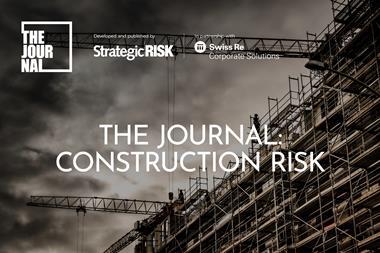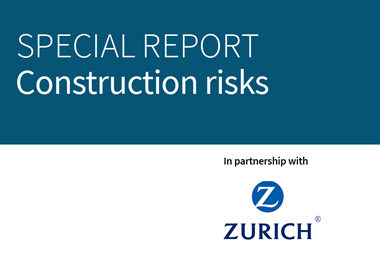Public procurement is a key aspect of government, affecting areas from providing staff with pens and pencils to procuring new schools. The process is a means to a single end: to achieve best value for money for the Government's purchases.
PPP is a growing business. UK government investment through PPP/PFI contracts typically represent 10-15% of total investment in public services in any one year. Investment under PFI was projected to make up 11% of total government investment in public services in 2003-4. Both the number and total capital value have increased, from nine projects worth £667m to something like 65 projects worth £7.50bn in 2002, although the 2002 figure was distorted by the tube PFI deal (see Fig 1). Since then the PPP market is likely to have grown even more.
What is PPP or PFI?
A Public Private Partnership (PPP) is a particular form of public procurement, which is defined as the process, by means of a contractual arrangement after public competition, of obtaining goods, services, works and other supplies by the public service. It therefore brings together a public body and a private company joined in a long-term partnership (lasting for up to 30 years), the aim of which is the delivery of public services, to their mutual benefit.
The private sector takes on the responsibility for providing a public service or infrastructure asset, from an agreed specification of required outputs, and then carries the responsibility and risks for designing, financing, constructing, maintaining and (usually) operating the asset, to deliver the service in accordance with the output specification.
The public sector pays for the project through a series of performance or throughput-related payments (unitary charges) over a period of years, which cover service delivery and return on investment.
The UK government's strategy has been to utilise PPPs as a key element for delivering 'modern, high quality' public services within the structure of a competitive economy. They have developed with the following broad objectives:
- releasing the full potential of public sector assets so as to provide value for the tax payer, together with wider benefit to the economy
- delivering significant improvement in public services, through a process which contributes to increased investment
- allowing stakeholders to share in the benefits arising from PPP.
Often reference is made to Public Finance Initiatives (PFIs). These are derivatives of PPP, being the most prolific and to date successful form of PPP.
A PFI is designed to deliver services where it will provide better value for money than traditional public sector procurement. A PFI allows the public sector to contract with the private sector to provide services on a long-term basis, typically 25-30 years, in a manner so as to take advantage of private sector management skills. These are incentivised by having private finance at risk and payments dependant upon performance.
The process spans the complete life cycle from mutual conception and definition of need to the end of the useful life of an asset or the end of a contract.
The contractual relationship and responsibilities for design, procurement and service delivery are substantially different to conventional procurement.
A typical contract organisation diagram (Fig 2) shows the relationships between the authority (public sector customer) and the project or concession company (special purpose vehicle: SPV), which is by way of a project/concession agreement. There are then contracts between those who undertake the construction and the facilities management (FM) provider, who provides the operation and maintenance. There is also a direct agreement between those lending money to the SPV, and the public sector customer, so that in the event of a failure of the SPV, the banks have 'step-in' rights to take over the running of the contract.
Why PPP/PFI is being used
From experience, the Government has realised that the public sector is not always best placed to deliver major investment projects, and that using the private sector can bring benefits.
It is generally a fact that the various contract and procurement routes open to the Government involve differing levels of risk transfer between the parties to the process. Fig 3 indicates how the degree of risk allocation (transfer) moves from the contractor across to the client, as the type of contract process changes, with PPP/PFI involving the client in the least risk, and construction management-type contracts involving the most risk. The key point regarding PPP/PFI type contracts and risks is that of risk transfer.
If we take the example of providing a new school,the Government has decided that the risks it faces in constructing the buildings on time and to a known cost, should be transferred to a contractor (this could also have been done using a design and build form of contract). However, what is different with the PPP/PFI model is that the risks that the government faces with maintaining the school, have also been transferred, and for a period representing a major portion of the building's life. This transfer could not really have been achieved under any other form of procurement contract. The Government has put the onus for designing the school, as well as running it onto the contractor, through the means of an output specification (build as a school for 800 pupils and maintain it and keep it clean for 25 years) rather than an input specification (build a school 100m x 200m, four storeys high of 150mm precast concrete. Give a price for cleaning the school, using 10 cleaners).
The policy seems to be working. According to research by the National Audit Office, an investigation into PFI's construction performance showed that more than 75% of PFI projects were delivered on time or early, and there were no cases of the public sector bearing any construction cost overruns, a significant improvement on previous experience. The research confirms the largely positive impact of PFI to date and highlights areas where there is scope for improvement. The key findings were:
- 89% of projects were delivered on time or early
- the PFI projects in sample were all delivered within public sector budgets
- no PFI project was found where the unitary charge had changed following contract signature (except where user requirements changed)
- 77% of public sector managers said that their project was meeting initial expectations
These figures obviously suggest, from the Government's point of view, that PFI is appropriate for complex capital projects with significant ongoing maintenance requirements. However there is a warning, in that the research also indicated that project performance in low capital value schemes and in IT was poorer, and that in these instances other procurement routes could offer a better alternative.
Table 1 sets out the general aims and objectives of PPP/PFI and gives a flavour of the benefits accruing from this form of procurement.
Key sources of risk
In considering PPP in the international context, it is especially important, outside the UK, that any authority looking at PPP focuses on the problems of ensuring that the process has selected the right project. Does the project have high or low profile? Ideally the project should be non controversial (ie not for a prison in a military dictatorship).
Is the project of the optimum size to gain benefits from the process?
The values generally need to be in the order of £20m. Smaller projects (for example five schools) could be grouped together for contract purposes, so-called 'bundling projects'. Another necessary factor of extreme importance is that of income stream. Without an underwritten and regular income, banks will not fund a scheme.
In the overseas arena, other factors also come into play, such as the covenant offered by government (ie its credit rating), and whether there will be international market offers from major companies and investors.
There will also be a need to build public awareness, as there may well be misapprehension and misunderstanding over what is proposed.
The entire process and organisation of PPP involves a number of stakeholders.The list is usually extensive. For example, it includes:
- government/authority
- concessionaire/property developer
- equity providers
- funders
- contractor
- facilities manager
- specialist providers
- others such as bid managers.
The prime area of risk when setting up a PPP deal lies in the tensions between the differing objectives or aspirations of the parties. They can be widely different, and potentially at odds with one another. For instance, a public authority requires speed of development, a high quality product, best value on price, incentives on the contractor to perform, risk transfer and access to private capital.
However the private sector has a different set of requirements, such as ensuring acceptable financial returns, gaining access to further contracts, a secure and assessable revenue stream, the ability to minimise the capital involved, and a reduction in uncertainty, requiring risk mitigation and control.
There will also be discrepancies in the attitude to risk. When trying to assess and measure risk, the question which most often needs to be asked is - in identifying risk, whose risk are we concerned with? Because of conflicting aspirations of the stakeholders involved, what is a risk for one group may be an opportunity for another.
A source of risk can thus be ascribed to risk attitude. Among the various stakeholders, it differs widely. Funders (banks) are risk adverse, and the government/authority - not being a commercial organisation - can be considered as either risk adverse or risk neutral. These organisations will be looking to transfer all risk down through the main contract (or principal agreement).
The contractors, FM, and equity providers, as commercial entities, are less risk adverse. They will usually accept more of the risk, such as construction, operation or performance risk, because generally a company cannot profit unless it is willing to accept some entrepreneurial risk.
However their attitude to risk will vary with the type of risk. For safety risk they will be risk adverse, but for commercial risk they will appear as risk seeking.
Other sources of risk emanate from the inherent characteristics of design, build, finance and operate (DBFO) projects. These include extended operating contract periods, public/private sector interfaces, transfers of staff from public to private employers, the fixed price nature of DBFO, the perils involved in design and construction, the human element; the fact that developing infrastructure projects gives no opportunity to practise and perfect the process, and the problems from teams who may never have worked together before. In fact PPP/PFI can be an unwieldy and lengthy process.
While it is easy to consider the risks arising from the contract and how these should be best managed, there is also a series of risks peripheral to the PFI process, which is equally common to conventional projects.
For example, there may be delays to planning approvals, a need for a public enquiry, or bespoke designs with no prototype. There is also a large range of market and price uncertainty due to the length of the project, cost overruns, delays in completion and increases in running costs. Finally, there is the fact that building usually involves digging large holes in the ground, where things like hidden obstructions or mine shafts may be found.
Risk transfer, sharing and allocation
The Government's approach to risk in PFI projects is not to seek to transfer risk to the private sector as an end in itself. Where risks are transferred, it is in order to create the correct incentives for the private sector.
Appropriate sharing of risks is the key to ensuring value for money benefits, which flow from making sure that the risks are 'borne by the party best placed to manage them'. In reality the transfer of risk from the public to the private sector goes far beyond that transferred through normal procurement paths, and for a major period of time.
Where the private sector SPV accepts this risk transfer, it then has to either further transfer it, or apply another more suitable risk management principles which may be more suitable by preparing a risk matrix, and trying to identify true cost of PPP procurement versus traditional procurement.
Table 2 shows a typical example of a risk allocation matrix.
The second part of this article next month will discuss the basic principles behind the approach to risk allocation in PPP/PFI, how the SPV mitigates or 'lays off' risk, and some examples of risk transfer and control in PPP projects.
- Mike Walker is a director at Currie & Brown, Tel: 020 7600 8787, E-mail: mike.walker@currieb.co.uk
TABLE 1: AIMS OF PPP/PFI
General aims and objectives ascribed to PPP:
- increased public sector capital works/infrastructure spending
- spread costs over a term
- gain private sector expertise for innovation
- gain private sector expertise for cost control and transfer of risk for overspends
- reduce tax burden
- improve the infrastructure
- run and maintain the buildings in an efficient and economical manner, to make a profit.



















